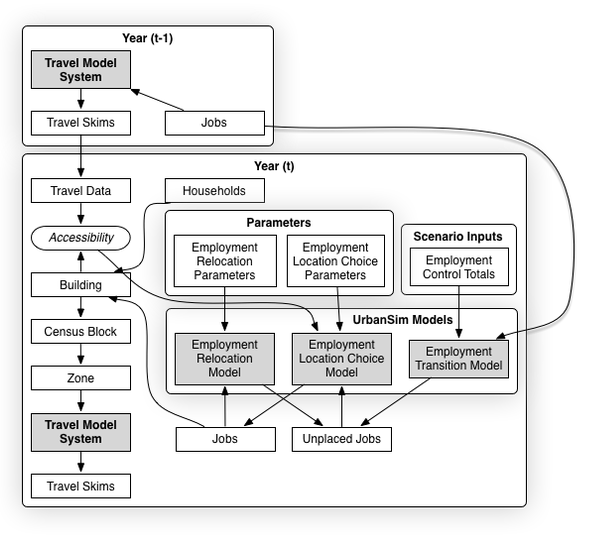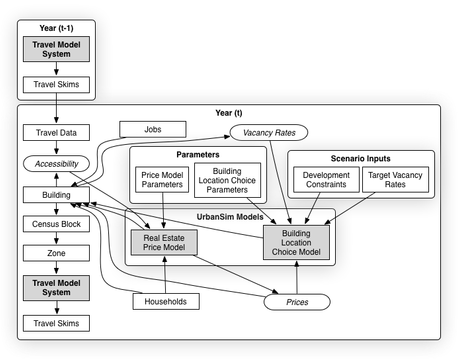UrbanSim Block Model¶
For more on the data schema required for the UrbanSim block model see here.
Household Models¶
In the block level UrbanSim application, households are associated with aggregated residential buildings within a census block, of single-family or multi-family type, and of rent or own status. From one year to the next, households choose whether to move or stay in their current residence, and if they choose to move, they make a location choice from the available (vacant) housing units. Factors such as housing prices and rents, accessibility, and local neighborhood composition all influence location choices of households of different incomes, sizes, and stages of life cycle.
Employment Models¶
Jobs are associated with census block locations. No publicly available data on non-residential buildings is available nationally, so the explicit representation of non-residential space is omitted from this version of the model. From one year to the next, jobs choose whether to move or stay in their current location, and if they choose to move, they make a location choice from the available census blocks that have remaining capacity for jobs. Factors such as accessibility to jobs and population, and local employment composition all influence location choices of jobs of different industry sectors.
Real Estate Models¶
Buildings are associated with census block locations. No publicly available data on non-residential buildings is available nationally, so the explicit representation of non-residential space is omitted from this version of the model. From one year to the next, residential units are added to census blocks based on vacancy rates in each submarket (residential building type - tenure combination), and the location of these units is based on factors such as accessibility, prices, rents, and other local factors, subject to development constraints imposed by local jurisdictions.
For more information on UrbanSim see here.


